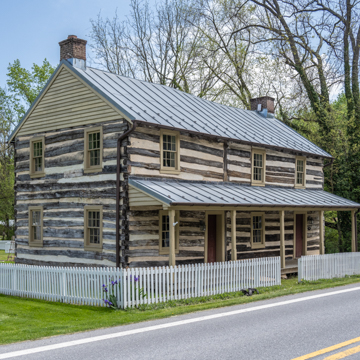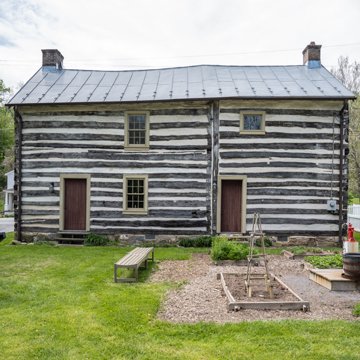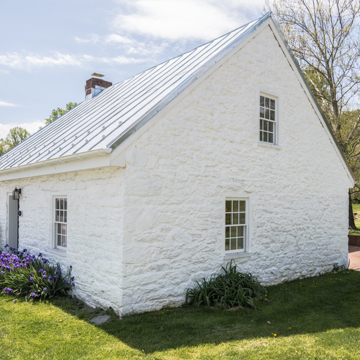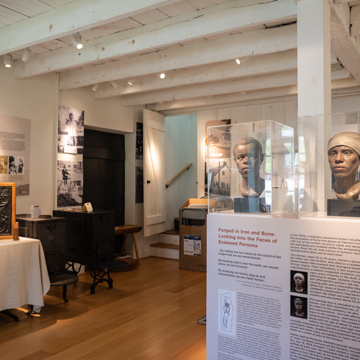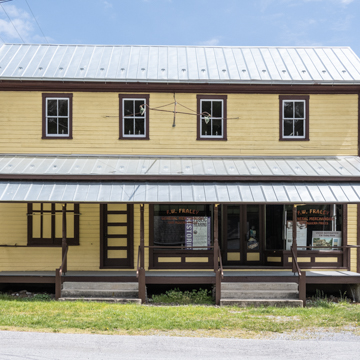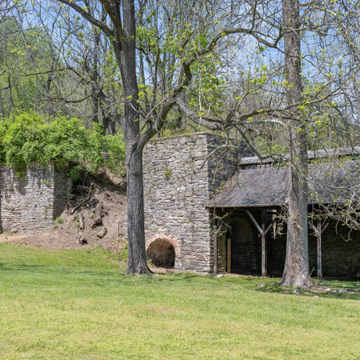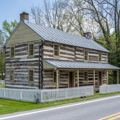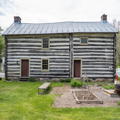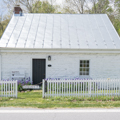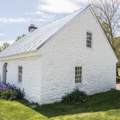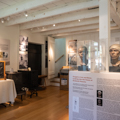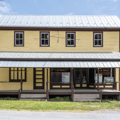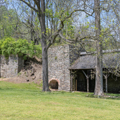The former company town of Catoctin Furnace is illustrative of the iron industry that developed in this area. The first of three furnaces was erected in 1774 and two more in the 1850s, including the now preserved “Isabella.” Representative stone, log, and frame workers’ housing remain, including a stone cottage now serving as the Museum of the Iron Worker (c. 1820; 12610 Catoctin Furnace), and the only remaining two-story log house (c.1810, c. 1830; 12607 Catoctin Furnace). The log house once inhabited by the town’s collier is now a museum and interpretative center. Both buildings are operated by the Ca-toctin Furnace Historical Society. Among the items produced here were iron tools, household utensils, and stoves, and its labor force included African American blacksmiths and forge men. Also extant is Fraley’s General Store (c. 1900; 12625 Catoctin Furnace). The furnace complex was established by Thomas Johnson of Rose Hill and his brothers, James, Roger, and Baker. Operations ceased in 1903.
You are here
CATOCTIN FURNACE
If SAH Archipedia has been useful to you, please consider supporting it.
SAH Archipedia tells the story of the United States through its buildings, landscapes, and cities. This freely available resource empowers the public with authoritative knowledge that deepens their understanding and appreciation of the built environment. But the Society of Architectural Historians, which created SAH Archipedia with University of Virginia Press, needs your support to maintain the high-caliber research, writing, photography, cartography, editing, design, and programming that make SAH Archipedia a trusted online resource available to all who value the history of place, heritage tourism, and learning.







